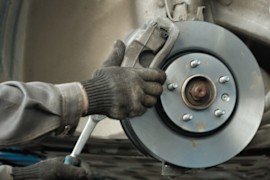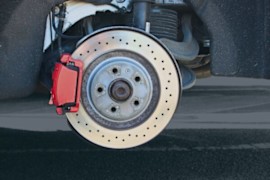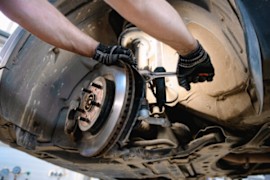{
"lazyNodes": false,
"abFitnotesFlag": false,
"abCrawlReviews": false,
"productOptionsCookie": false,
"orderDelayFlag": false,
"skipSessionCookie": false,
"covidMessage": false,
"fullTitleCookie": false,
"nrLoggerCookie": false,
"checkoutReviewCookie": false,
"productOptionSeqCookie": false,
"maintenanceFlag": false,
"bufferETACookie": false,
"multiShippingDiscountFlag": false,
"newFitmentFlag": false,
"surveyOptInFlag": false,
"crossSellFlag": false,
"skuMappingFlag": false,
"paySplitCookie": false,
"callDisableFlag": false,
"zipPaymentFlag": "u",
"hassleFreeReturn": false,
"lifetimeReplacement": false,
"cpn_off": false
}Audi S8 Brake Calipers
Shop Catalog
+ $64.78 Refundable Core Charge
![]() WARNING: This product can expose you to chemical which is known to the State of California to cause cancer and birth defects or other reproductive harm. For more information go to www.P65Warnings.ca.gov.
WARNING: This product can expose you to chemical which is known to the State of California to cause cancer and birth defects or other reproductive harm. For more information go to www.P65Warnings.ca.gov.
+ $58.19 Refundable Core Charge
![]() WARNING: This product can expose you to chemical which is known to the State of California to cause cancer and birth defects or other reproductive harm. For more information go to www.P65Warnings.ca.gov.
WARNING: This product can expose you to chemical which is known to the State of California to cause cancer and birth defects or other reproductive harm. For more information go to www.P65Warnings.ca.gov.
Customer Guides
How to Inspect your Audi S8 Brake Caliper for Signs of Wear or Damage
The Audi S8 brake caliper works like a clamp on the disk rotor in stopping the wheel from turning whenever you apply the brakes. Because stopping your car is one of the first actions to prevent collisions, this component always has to be in top shape. So once you notice a change in your vehicle's braking, immediately check for signs of a broken caliper like:
Uneven brake pad wear
This is usually caused by the brake caliper slides sticking. When the component gets dirty or is starting to rust, it binds the braking process. This causes uneven force to be applied to each brake pad and then leads to uneven wear. Remove the brake caliper and check for rust or dirt. The component will only need to be cleaned regularly to avoid this from happening again.
Pulled braking
When you notice your car darting to the left or right the moment you hit the brakes, one of the calipers might be defective. To determine which one is faulty, observe where your vehicle is pulling-if it does to the left, then the right caliper needs to be replaced, and vice versa. Once you find which caliper is failing, open up its housing's bleeder valve and then close it off. Next, raise your car a bit using a mechanical lift and press the acceleration pedal. If the wheel assembly doesn't spin freely, then the caliper piston is most likely frozen and the brake caliper itself needs to be replaced.
Squealing
Drive around and take note of how your total brake system performs. If you can hear the brakes squeal whenever you stop suddenly, there is a possibility that the hardware attaching the brake calipers is worn. The squealing noise is usually caused by vibration, and you must buy a new attaching hardware right away.
Locked-up caliper
Most drivers know that if their car's brake pedal is too soft, they have to tighten their calipers. However, not many of them have any idea about the dangers of overly tightening the component. When you tighten the caliper's screws too much and you hit the brakes too hard, the calipers lock up and cause your car to turn, which can lead you into an accident. To check if one of your calipers is screwed too tight, check how hard it is to brake when you step on the pedal. It is also much safer to release their screws about a half-turn, so that the caliper has some room to move.
As part of your car's braking system, the caliper is responsible for converting fluid pressure into mechanical energy by compressing the brake pads against the rotor. Because your safety relies on this set of parts, maintaining your Audi S8 brake caliper to function properly is top priority. Maintenance will help prevent the component from failing and thus save your time and money to replace it. The right schedule for doing this routine is whenever you replace the brake pads. For a proper caliper service, take note of the following tips and reminders:
- Use jack stands to steady your car
- Remember to clamp the brake line
- Use the right tools in removing the caliper
- Place the caliper's tiny hardware pieces in a bowl so you won't lose them
- Only use a brake cleaner for the caliper
- Inspect the components inside the caliper
Because you need to closely inspect the brake caliper, you have to remove the wheel next to it. Remember to use jack stands after lifting your vehicle to steady and prevent it from falling on and crushing you.
To prevent fluid loss, clamp the brake line that goes to the caliper, but don't do it so tightly that it might damage the hose.
In order to take out the brake caliper, you must first remove the bolts on its back. Use tools like a breaker bar or a penetrating catalyst in order for you to do this.
Nothing else will hassle you more than losing at least one of the brake caliper's small attaching hardware. After you take out the slide pins and bolts that hold its housing, place them in a small container and set it on a stable surface that's easy to find.
Because the brake caliper is easily dirtied with dust and oil, a special cleaning formula should be used to get rid of the dirt without damaging its mechanism. As for what cleaning tools to use, a wire brush and some shop rugs are enough. Remember not to use the brush on the rubber grommets and seals though, as these pieces might get damaged.
To make sure that everything in the component is working, manually move its parts. With the caliper piston, for example, slowly manipulate it in and out to see if it moves freely. Also check the rubber dust seals that retain the piston. If there's something wrong with these pieces, you will have to rebuild your brake caliper.






